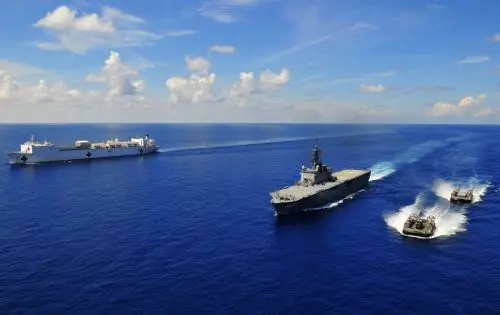Canada and the U.S. has signed the Agreement on Land, Rail, Marine and Air Transport Preclearance, Canada's Ministry of Public Safety and Emergency Preparedness announced Monday.
The agreement was signed by Canada's Minister of Public Safety and Emergency Preparedness Steven Blaney and U.S. Secretary of Homeland Security Jeh Johnson in Washington Monday morning, following their meeting on border security.
It is a major commitment of the Beyond the Border Action Plan issued by Canadian Prime Minister Stephen Harper and U.S. President Barack Obama in December 2011.
According to the Canadian ministry, every day, nearly 400,000 people cross the Canada-U.S. land border, along with over two billion U.S. dollars in goods and services.
A highly efficient border that ensures the efficient flow of legitimate goods and people is essential to this trade relationship. Through the comprehensive approach to preclearance outlined in the agreement, Canada and the U.S. are seeking to strengthen their relationship and enhance their mutual security, prosperity and economic competitiveness, said the Canadian ministry.
Preclearance operations were implemented in Canada for the first time in 1952, when U.S. preclearance officers began screening travelers for U.S.-bound planes at the Toronto International Airport. A formal preclearance agreement with the U. S. did not exist at that time. Canada and the U.S. reached their first air transport preclearance agreement in 1974.
Each year, some 11 million passengers are pre-cleared for flights to the U.S. at eight Canadian airports under the current bilateral air preclearance framework - reducing wait times for these passengers and often reducing the number of connections they required.
This historic new comprehensive agreement covers all modes of travel, including air. When it enters into force, it will replace the existing air transport agreement, which was signed in 2001. This single agreement will ensure a consistent approach to all preclearance activities, regardless of the mode of transportation, making it easier to implement and govern preclearance activities in both countries.
In the Beyond the Border Action Plan, in addition to negotiating a comprehensive approach to preclearance in the land, rail, marine and air modes, Canada and the U.S. committed to implementing a truck cargo pre-inspection pilot in Canada. Phase I of the pilot was implemented at the Pacific Highway crossing between British Columbia and Washington, from June to December 2013. Phase II was implemented at the Peace Bridge, between Ontario and New York, from February 2014 to January 2015. An evaluation of the pilot will be completed by July 31, 2015. Enditem
 简体中文
简体中文

